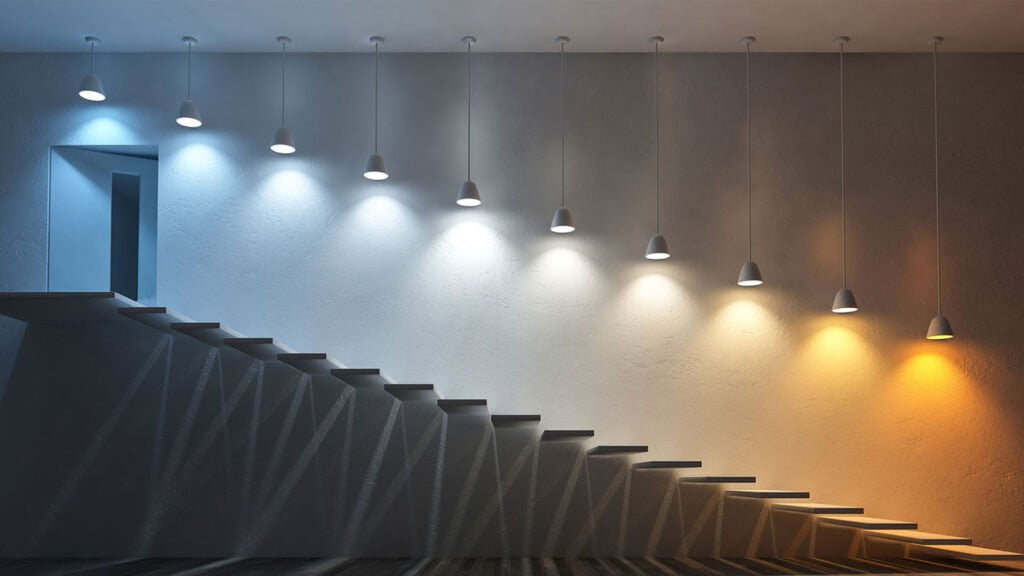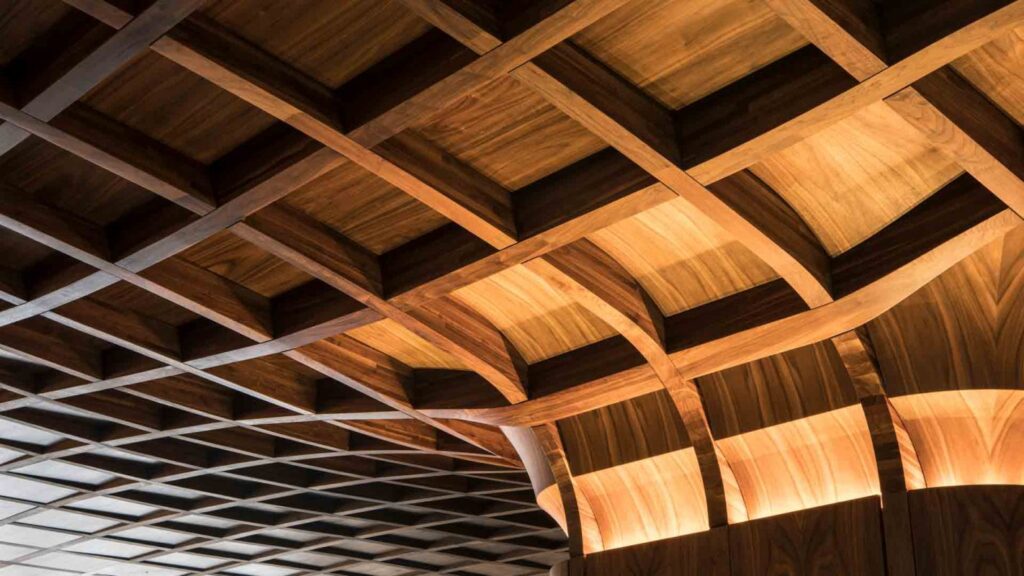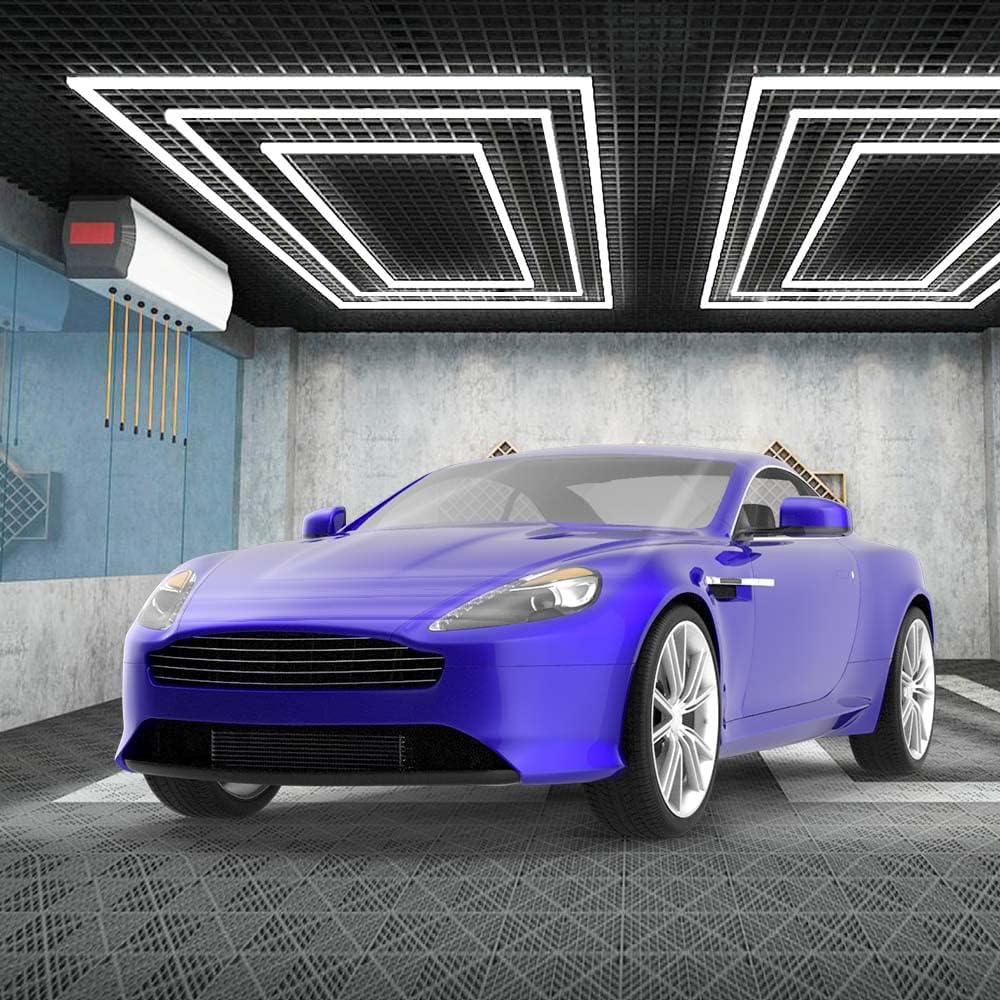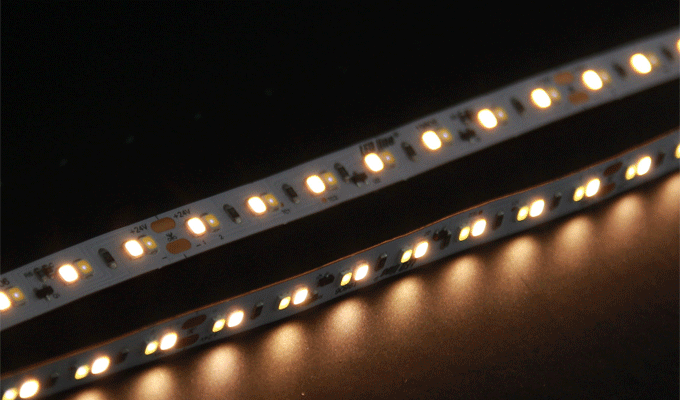Warm Light Vs Cool Light: Which is Best for Home and Why?
Table of Contents
Deciding whether to use warm or cool lights in your area can take time and effort. Warm lights are known for making a room feel cozy, while cool lights are often chosen because they make people feel more awake. But which one will work best for you and why?
Based on how warm or cool their color is, lights are put into two groups: warm and cool. Lower color temperatures, between 2700K and 3200K, give off a yellowish tone and are often called “warm lights.” Like the warm glow of the fire or the sun’s rays at sunset, these lights make the room feel cozy and welcoming. Cool lights, on the other hand, have a higher color temperature (4000K to 6500K) and give off a bluish light. The light from these lights is known for being bright and lively, which makes them great for work lighting.
Before choosing between warm and cool lights, it’s essential to think about how the lighting will be used. For example, warm lights may be better for creating a cozy and relaxing atmosphere in the living room, while cool lights may be better for areas where you need to be alert and focused, like home offices or kitchens.
In the following piece, we’ll compare warm and cold lights to help you pick the right one for your home or business. This article has the necessary information if you’re having trouble deciding between warm and cool lights.
Warm Light vs. Cool Light: The Basics

Before you can understand warm and excellent lighting, you must first understand color temperature and how it pertains to warm and perfect lighting.
What is Color Temperature?
Color temperature pertains to the hue of the illumination emanated by a light source, gauged in degrees of Kelvin (K). The gradient of color temperature stretches from warm hues, such as tangerine and amber, to chilly shades, like sapphire and ivory. Light with a warm color temperature possesses a lower Kelvin rating and emanates a yellow-orange hue. Conversely, cold morning has a higher color temperature and emits a bluish-white glow.
Chilly light having a higher color temperature can augment the brightness and vibrancy of colors. Simultaneously, warm light having a lower color temperature can dampen and muffle the colors’ radiance.
Range of Color Temperature
| Lighting Effect | Color Temperature |
| Warm Light | 2700K-3200K |
| Neutral White Light | 3200K-4000K |
| Cool Light | 4000K-6500K |
What Is Warm Light?
Warm lighting is often chosen because it can make a room feel cozy and welcoming, like the glow of a sunset or candles. Warm light usually has a color temperature between 2700K and 3200K and looks more yellow or orange. This is why it is often used in beds and living rooms. Warm lighting can make any area feel like a peaceful sanctuary because it is comforting and relaxing. Let’s weigh the advantages and disadvantages:
| Pros | Cons |
| Creates a cozy and inviting atmosphere | It can make a room feel smaller or more closed in |
| Mimics the soothing glow of a sunset or candlelight | It can cause eye strain or fatigue if not balanced with cool light |
| Ideal for residential settings like bedrooms or living rooms | It may not provide enough brightness for tasks or work activities |
| Helps to promote relaxation and calmness | It can make colors appear less vivid or accurate |
| Enhances warm-toned interiors and décor | It may not be suitable for certain areas like kitchens or bathrooms where brighter, cooler light is needed |
Characteristics of Warm Light
-
- Soft and Calming Effect: Warm light emits a yellowish-orange hue that provides a soft and calming effect, making it an excellent choice for creating a cozy and inviting atmosphere.
-
- Gentle and Diffused: Compared to cool white or daylight, warm light is less harsh and more diffused, producing soft shadows and a warm glow that flatters people’s faces and objects in a room.
-
- Enhances Warmth and Richness of Colors: Warm light has a higher red content that brings out warm tones in objects and surfaces, enhancing their warmth and richness and making them appear more vibrant and natural.
-
- Creates a Soothing Environment: The gentle nature of warm light makes it an ideal choice for creating a soothing environment that promotes relaxation and comfort, perfect for unwinding after a long day.
-
- Versatile Lighting Option: Warm light is a versatile lighting option that can transform any space into a cozy and welcoming environment, enhancing the mood and atmosphere of anyone in the room.
-
- Ideal for Creating a Cozy Ambiance: Warm light’s soft and gentle nature, combined with its ability to enhance warmth and richness of colors, makes it an ideal choice for creating a cozy ambiance in living rooms, bedrooms, and other spaces where relaxation is a priority.

The Benefits of Using Warm Light
There are numerous choices for lighting our homes and workspaces. Warm light, which has a yellowish-orange hue and a soft, calming impact, is popular. Warm light, on the other hand, has several advantages over cold or daylight-colored light sources.
-
- Promotes Relaxation and Comfort
Warm light is also known for its ability to enhance ambiance and mood. It creates an inviting atmosphere that can make any space feel more comfortable and welcoming. This is why warm light is often used in restaurants, cafes, and other hospitality settings, where creating a warm and inviting ambiance is key.
-
- Enhances Ambiance and Mood
Warm light is also known for its ability to enhance ambiance and mood. It creates an inviting atmosphere that can make any space feel more comfortable and welcoming. This is why warm light is often used in restaurants, cafes, and other hospitality settings, where creating a warm and inviting ambiance is key.
-
- Improves Sleep Quality
Another significant benefit of warm light is its ability to improve sleep quality. Exposure to cool or blue-toned light in the evening can disrupt our natural sleep-wake cycle, leading to poor sleep quality. In contrast, warm light in the evening can help us wind down and prepare for sleep, leading to better sleep quality. This makes warm light an excellent choice for bedrooms and other areas where sleep is a priority.
-
- Flatter Skin Tones
Warm light can also make our skin look healthier and more natural. It brings out warmer tones in our complexion, which can be flattering for people of all skin types. This is why many makeup artists and photographers prefer warm light – it can make their subjects look their best.
-
- Saves Energy
Finally, warm light can be more energy-efficient than cool or daylight-colored light sources. Warm light sources such as LED bulbs can require less energy to produce the same amount of light, making them a more sustainable choice for lighting our homes and workspaces.
How Warm Light Affects Our Mood?
Warm light has a yellowish-orange color, giving off a soft, gentle glow that makes us feel more at ease and relaxed. This makes it a great choice for beds, living rooms, and places to meditate where we want to feel calm and peaceful.
Warm light has also been shown to improve a room’s atmosphere and mood, making it a popular choice in restaurants, bars, and other places where people gather. Warm light can improve our general experience and make us feel more comfortable and welcome by making the room warm and inviting.
Warm light also affects how well we sleep, affecting how we feel. Exposure to cool or blue-toned light in the evening can mess up our normal sleep-wake cycle, making it hard to get a good night’s sleep. Warm light in the evening can help us relax and get ready for sleep, leading to better sleep and better health.
Warm light can also make our skin tones look better and healthier. Warm light makes our skin look warmer, which is why many makeup artists and photographers like to work with it.
Lastly, warm light sources, like LED lights, can use less energy than daylight-colored light sources. This makes them a green and sustainable choice.

When to Use Warm Light?
Warm light is a good choice for lighting in many settings. Warm light can make a home feel relaxed and friendly. Because of this, it is a great choice for places like living rooms, beds, and places to meditate.
Similarly, warm lighting can be used in restaurants, bars, and shops to make customers feel welcome and comfortable. A warm, soft glow of light can make eating more enjoyable and create a cozy atmosphere.
Warm lights may also be chosen when taking photos or making videos. Warm light can give portraits a natural, flattering glow and give wedding or event movies a soft, romantic feel.
But it’s essential to remember that warm light might not be right for every setting. Brightness and clarity are more important than the atmosphere in business or industrial settings. These places might be better with cool white or daylight lights.
In the same way, bright light is not the best for things like reading or working on a computer that requires clear vision and accuracy. In these situations, cool white or daylight lights can give you the brightness and clarity you need to see well.

What Is Cool Light?
Cool light, like sunshine, is bluish-white. Offices, workshops, and clinics use it for brightness and clarity. Cool light is usually 4000K to 6500K. Warm light, which is yellowish-orange, has a lower color tone than this light. Work and study areas prefer cool light because it boosts alertness and productivity. It can also reduce eye strain and fatigue, especially in precise visual jobs. Some benefits and drawbacks are listed below:
| Pros of Cool Light | Cons of Cool Light |
| Increases alertness and productivity | It may cause eye strain or discomfort in some individuals |
| Provides a clean and modern look in interior design | It can have a harsh or sterile feel, which may not be suitable for all settings |
| Can enhance visual clarity and precision in tasks | It may not be ideal for creating a cozy or comfortable atmosphere |
| Useful in settings where brightness and clarity are important, such as offices or workshops | It can be less energy-efficient than warm light sources |
| It can provide a contrasting effect when combined with warm light | It may not be the best choice for certain types of photography or videography |
| Can be effective in reducing Seasonal Affective Disorder (SAD) symptoms in some individuals | It can disrupt natural sleep patterns if used at night or in the evening |
| It may help regulate circadian rhythms and improve sleep quality when used in the morning or early afternoon | It may not accurately represent colors or textures in certain environments, such as art galleries or museums |
Characteristics Of Cool Light
-
- Enhances Alertness and Productivity: Cool light has a higher color temperature and produces a bright, stimulating effect on the body and mind. This can help improve focus, concentration, and productivity, making it an ideal choice for workspaces, classrooms, and other areas where mental alertness is required.
-
- Provides a Clean and Modern Look: Cool light is often associated with a crisp, clear, and contemporary aesthetic. It can make interiors feel brighter and more spacious, giving them a sleek and polished appearance.
-
- Enhances Visual Clarity and Precision: The bright and focused nature of cool light can help improve visual acuity and color differentiation. This makes it a popular choice for tasks that require attention to detail, such as reading, writing, or crafting.
-
- Can Have a Harsh or Sterile Feel: While cool light can create a clean and modern look, it can also come across as harsh or sterile. This may not be suitable for all settings or may require balancing with other lighting sources.
-
- May Disrupt Sleep Patterns: Cool light exposure in the evening can interfere with the body’s natural sleep-wake cycle, leading to difficulty falling asleep or poor sleep quality. It’s important to consider the timing and intensity of cool light usage to minimize these effects.
-
- May Not Accurately Represent Colors: Cool light has a higher blue content, which can affect how colors appear in different environments. This may not be ideal for situations where color accuracy is important, such as art galleries or museums.

The Benefits of Using Cool Light
Cool light has several benefits over warm light sources. Here are some of the benefits of using cool light:
-
- Increases Alertness: Cool light has a higher color temperature than warm light. This makes it a popular choice in workspaces, offices, and classrooms. It helps to increase alertness, productivity, and mental clarity. This is because it suppresses the hormone melatonin, which regulates sleep and wakefulness.
-
- Improves Focus: Cool light can help improve focus and concentration. It provides a clear, bright, and stimulating light that helps to keep our brains active and focused. This is why it’s a popular choice for tasks that require visual precision and accuracy, such as reading, writing, and computer work.
-
- Enhances Visibility: Cool light provides better visibility than warm light. It makes it easier to see and distinguish between colors, details, and contrasts. This makes it a popular choice in museums, galleries, and retail stores. It helps to showcase products, artwork, and exhibits in their best light.
-
- Reduces Eye Strain: Cool light reduces eye strain and fatigue. It provides a bright and even light that helps to prevent eye strain, headaches, and other eye-related problems. This makes it a popular choice for workspaces, offices, and classrooms.
-
- Helps with Seasonal Affective Disorder (SAD): Cool light can help to alleviate symptoms of seasonal affective disorder (SAD). SAD is a type of depression that occurs during the winter months when there is less natural sunlight. Cool light therapy can help to simulate natural daylight and improve mood, energy, and sleep.
-
- Saves Energy: Cool light sources, such as LED bulb,s are more energy-efficient than warm light sources. They use less electricity to produce the same amount of light. This makes them a popular choice for environmentally conscious individuals and businesses.

How Cool Light Affects Our Mood?
Cool light, also called “blue light,” can greatly affect how we feel. Researchers have found that exposure to cool light in the evening or at night can reduce our circadian cycle. The normal 24-hour cycle in our bodies controls when we sleep and wake up, when hormones are released, and other bodily functions.
Melatonin production is one of the main ways that cool light changes our mood. Melatonin is a hormone that helps you fall asleep and stay asleep. When exposed to cool light, our brain thinks it’s daytime and stops making melatonin. This makes it hard to fall asleep, disrupts sleep, and makes us sleepy during the day. This can make us feel bad and make it hard to think.
Studies have also shown that people who are already more likely to get depressed are more likely to feel sad in cool light. A study released in the journal Nature found that blue light made the part of the brain linked to depression work more. This makes the chance of getting depressive signs higher.
On the other hand, being outside in natural light, especially in the morning or early afternoon, can make you feel better. Our circadian cycle is controlled by natural light, and serotonin is made more when there is more natural light. This hormone helps make people feel good and happy. It can help ease the signs of Seasonal Affective Disorder (SAD), a type of depression in winter.
It’s important to know that not all cool light is risky. Cool light sources with lower color temperatures may not affect our happiness and sleep as badly as cool light sources with higher color temperatures. It’s important to pick the right light for the right action and time of day. The bad effects of cool light on our mood and sleep can also be lessened by wearing glasses or filters that block blue light.
When to Use Cool Light?
Cool light, often known as blue light, can be utilized for several purposes. Offices, workshops, and factories are just some settings where cool light would be ideal. Bright, targeted lighting that helps with vision and attentiveness is essential in these settings. In addition, reading, writing, or sketching can all benefit from being done under cool light because of the increased clarity it provides.
Cool light can also be beneficial for outdoor lighting. It provides clear and bright illumination that can help enhance visibility at night. It is also popular for security lighting as it can detect movement and increase visibility in outdoor spaces.
However, it’s important to note that cool light may not suit all situations. Cool light can create a harsh and unwelcoming environment in residential settings, especially in living spaces such as bedrooms or rooms. It can also disrupt our natural sleep-wake cycle in the evening or at night. Therefore, warm light may be a better choice for these spaces. Overall, the decision to use cool light should be based on the specific needs of the environment and the desired outcome.

Differences Between Warm Light & Cool Light

You already know about warm and cool lighting from the preceding part. Let’s look at a side-by-side comparison of these two illumination types-
| Warm Light | Cool Light |
| Has a yellow or orange hue | Has a blue or white hue |
| Creates a cozy and relaxing atmosphere | Creates a more energizing atmosphere |
| Enhances warm colors such as red, orange, and yellow | Enhances cool colors such as blue and green |
| Makes objects and people appear warmer and more natural | Makes objects and people appear cooler and crisper |
| Has a lower color temperature, typically around 2700K-3000K | Has a higher color temperature, typically around 5000K-6500K |
| It may not provide sufficient light for tasks that require visual clarity | Provides bright and clear light suitable for tasks that require visual clarity |
| It can make a room appear smaller and more intimate | It can make a room appear larger and more spacious |
| It is often preferred in residential settings, such as bedrooms and living rooms | It is often preferred in commercial settings, such as offices and hospitals |
| It can be more energy-efficient and cost-effective | It can be less energy-efficient and cost more |
| It may not be suitable for tasks that require color accuracy, such as artwork or photography. | It is often preferred for tasks that require color accuracy, such as artwork or photography. |
Warm Light Vs. Cool Light: Which Is Better & Why?
The type of lighting varies depending on the area and the goal of the lighting. To determine whether warm or cool lighting is preferable, consider the lighting area, its ambiance, the job done in that area, and other factors.
Living Room
The living room serves as the hub of the house for everything from unwinding to hosting guests. The function of a room is a key factor in deciding how to illuminate it. Warm lights create a comfortable atmosphere perfect for unwinding. However, a cooler lighting scheme would be preferable if you plan on reading or working in the area. Tunable LED strips provide the best of both worlds, allowing you to quickly and easily choose between warm and cool tones.
Bedroom
The kitchen is a workspace where proper lighting is essential for cooking and food preparation. Cool lighting is preferred for the kitchen because it allows you to see colors accurately and is more functional. Look for cool lighting fixtures with a high Color Rendering Index (CRI) rating of 90 or above for the most accurate color perception. For more information on kitchen lighting, check out our article on choosing LED strip lights for kitchen cabinets.
Kitchen
The kitchen is a workspace where proper lighting is essential for cooking and food preparation. Cool lighting is preferred for the kitchen because it allows you to see colors accurately and is more functional. Look for cool lighting fixtures with a high Color Rendering Index (CRI) rating of 90 or above for the most accurate color perception. For more information on kitchen lighting, check out our article on choosing LED strip lights for kitchen cabinets.
Bathroom
The bathroom is where warm and cool lighting can work well, depending on your preference. Use a variety of light fixtures, including recessed lighting, LED strips, pendant lights, and chandeliers, to create the ambiance you want. Choose the lighting temperature that best suits your bathroom design.
Garage
When lighting the carport, the more space there is to illuminate, the more light you will require. If you use your carport as a workspace or for hobbies, you’ll need more concentrated and brighter lighting than normal. While a warmer light (one with a color temperature between 2700K and 3500K) is more conducive to relaxation and general use, a cooler light (one with a color temperature between 5000K and 6500K) is better for task-oriented activities in the workshop, such as working on the car.
Study Room
In most cases, fluorescent lighting with a color temperature between 4000K and 5000K is the best choice for a study area. This gives the kind of focused illumination perfect for close work like reading, writing, or using a computer. Reduced eye fatigue is another benefit of using lights in this color spectrum. Think about using table lights and floor lamps to set your desired mood.
Office
In an office setting, cooler temperatures (5000K-6500K) are generally preferred. These provide a bright, energizing light that can improve focus and productivity. Warmer temperatures (2700K-3000K) can be used in areas with a more relaxed atmosphere, such as the break room or hallway. Be sure to use the right lighting for your workspace to avoid eyestrain and fatigue. Here is a color temperature recommendation for a different area of the office-
| Office Lighting Areas | Recommended Color Temperature |
| General office | 4000K |
| Employee break room | 3300K- 5300K |
| Office corridor | 3000K-4000K |
| Lobby office | 5000K |

How to Choose the Right Color Temperature For Warm & Cool Lights?
Choosing the right color temperature for your warm and cool lights can significantly impact the ambiance of your space. Before you make any decisions, it’s important to understand the color temperature scale, which is measured in Kelvin (K).
-
- Warm light ranges from 2700K to 3500K, and it has a yellow or orange tint to it. This type of lighting is ideal for creating a cozy and relaxing ambiance. On the other hand, cool light ranges from 4000K to 6500K, and it has a blue or white tint to it. This type of lighting is best for areas that require more focus and productivity, such as offices or study rooms.
-
- When choosing the color temperature for your lights, consider the purpose of the room. For example, in the living room, you may want to create a cozy ambiance for relaxation so that warm light would be a better option. In the kitchen, where you need accurate color perception while cooking, cool light with a high Color Rendering Index (CRI) rating would be more suitable.
-
- Another factor to consider is the time of day and the amount of natural light in the room. If your room receives a lot of natural light, cool light may be too bright and overwhelming. In contrast, warm light can create a comfortable and relaxing atmosphere during the evening hours.
-
- Lastly, don’t be afraid to experiment with different color temperatures and lighting fixtures. Tunable LED strips, for example, can provide you with complete control over the coloring of your lighting. With these strips, you can easily switch between warm and cool tones as needed.
Color Temperature Adjusting LED Strips (Warm to Cool)
LED strips that let you change the color temperature are also called “tunable white” or “dim-to-warm” LED strips. They have a range of white light choices, from warm to cool, to meet different lighting needs.
Tunable White LED Strip
One popular type of color temperature-adjusting LED strip is the tunable white LED strip. With this type of LED strip, you can adjust the color temperature to anywhere between 2700K (warm white) and 6500K (cool white). This means you can customize the lighting to suit your needs, whether you want a cozy, inviting atmosphere or a bright, energizing one.
But if you’re specifically looking to mimic the warm glow of incandescent light bulbs, then you might want to consider a dim-to-warm LED strip. As you dim the strip, the color temperature gradually shifts from cool white to warm white, creating a cozy and inviting ambiance. This type of LED strip is perfect for bedrooms, living rooms, and other spaces where you want to relax and unwind.

Dim-to-Warm LED Strip
With dim-to-warm LED strips, you can achieve a variety of warm tones by selecting a specific color temperature range. For example, a color temperature of 2200K-2700K produces a soft, warm glow similar to candlelight, while a range of 3000K-3500K produces a more neutral warm light. So you can choose the perfect warm tone to suit your space and your mood.
Overall, color temperature-adjusting LED strips provide a customizable lighting solution that can suit the needs of any space. Whether you opt for a tunable white LED strip or a dim-to-warm LED strip, you’ll be able to transform the mood of your room and create the perfect ambiance. So why settle for harsh, uninviting lighting when you can add some warmth and coziness with color temperature-adjusting LED strips?

Final Thoughts
There is no simple answer to the age-old question of whether warm light or cool light is better. Warm light makes a cozy, intimate atmosphere that’s great for relaxing, while cool light can help you stay awake and focused. In the end, it all depends on the job at hand and the mood you want to set.
If you can’t decide between two types of lighting, why not choose the best of both? With LED strips that let you change the color temperature, like changeable white and dim-to-warm, it’s easy to switch between warm and cool tones. Plus, a smart controller makes it easy to change the lighting to your taste with just a tap of your finger.
On our website, you can find a wide range of LED strip lights to meet any need or taste. We have the right LED strip for you, no matter if you want warm or cool lighting, single color or RGB, programmable or not. So why choose just one kind of lighting when you can have everything? Check out our selection of LED strips today to find the right one for your place.
FAQs
Why does color temperature matter when choosing home lighting?
Color temperature affects how a room looks and feels. Warmer tones like 3000K create a cozy, relaxing vibe—great for bedrooms and living rooms. Cooler tones like 6000K feel brighter and more energizing, making them ideal for kitchens, bathrooms, or workspaces.
Which is better for living rooms—3000K or 6000K?
3000K is usually better for living rooms. Its warm, cozy glow creates a relaxing and comfortable atmosphere, making it ideal for spaces meant for unwinding or socializing.
Is 6000K lighting too harsh for indoor use?
6000K lighting can feel a bit harsh in areas meant for relaxation, but it’s great for task-oriented spaces like garages, offices, or kitchens. It offers a bright, crisp light that helps with visibility and focus.
Can I mix 3000K and 6000K lights in the same room?
It’s not recommended to mix them in the same room, as the contrast can feel unbalanced or distracting. If you do mix them, try to use them in separate zones or layers with different purposes, like task vs. ambient lighting.
Does color temperature affect energy usage?
No, the color temperature (3000K or 6000K) doesn’t directly affect energy usage. Both can have similar wattages and efficiency. However, brighter light (like 6000K) may give the impression of more brightness for the same wattage.

Hi, I’m Xylia Xiong, a sales professional with 14 years of experience in the LED strip light industry. I specialize in providing tailored solutions, leveraging my expertise in LED products and the latest industry trends. Known for effective communication and problem-solving, I’m dedicated to helping lighting manufacturers, importers, and distributors achieve their goals.
Let’s work together to create customized solutions that exceed expectations.
Related Posts

The Best LED Strip Lights You Can Buy Right Now

Comparing WS2811 Vs WS2812B: Key Differences


